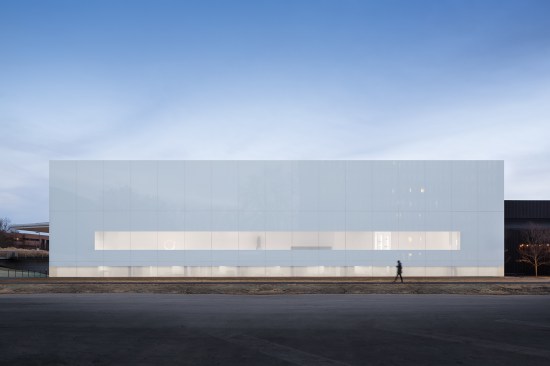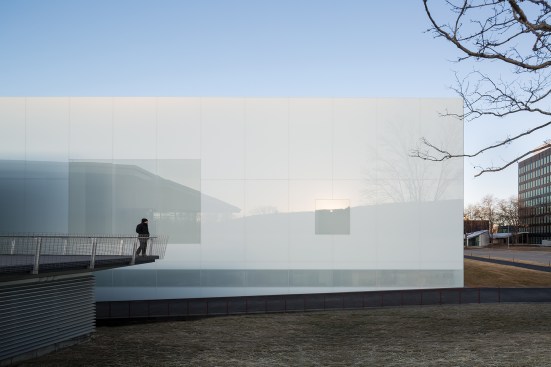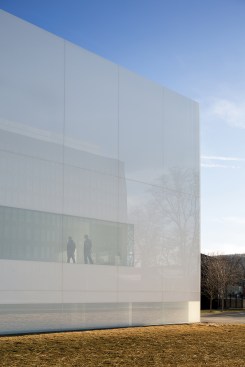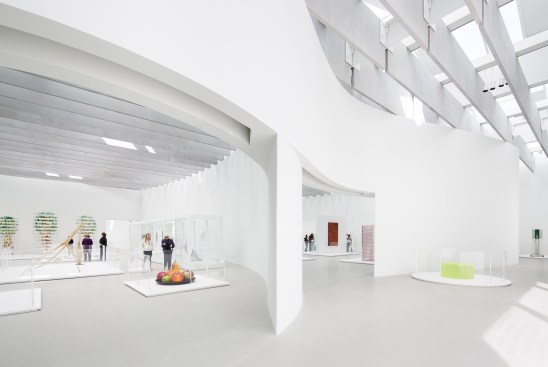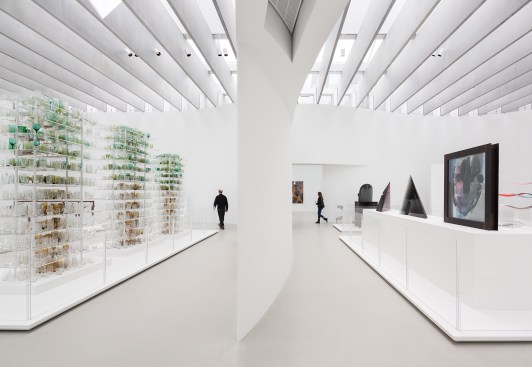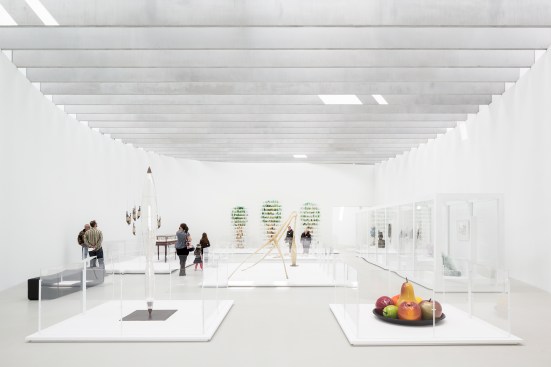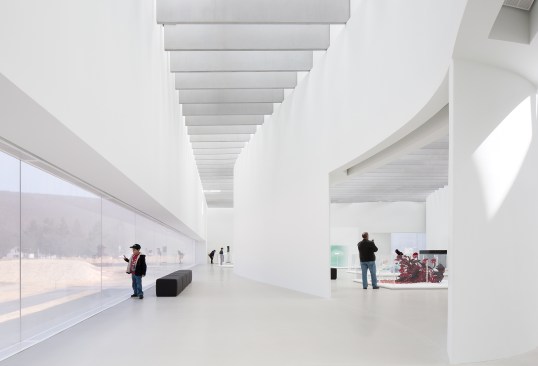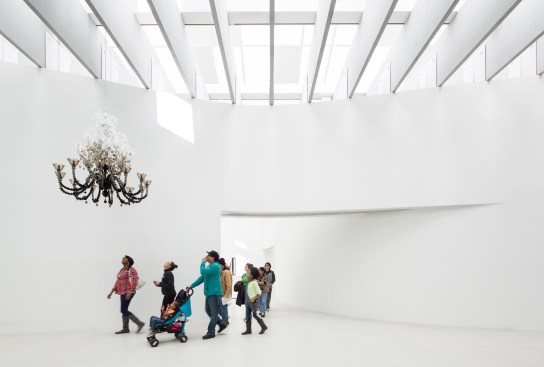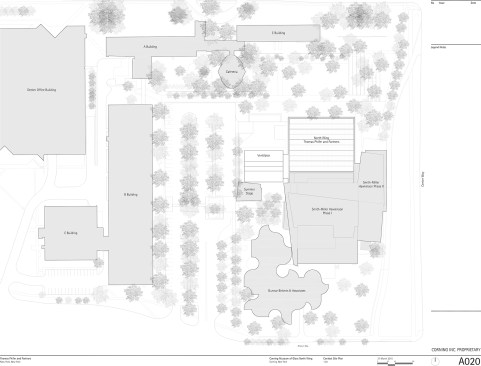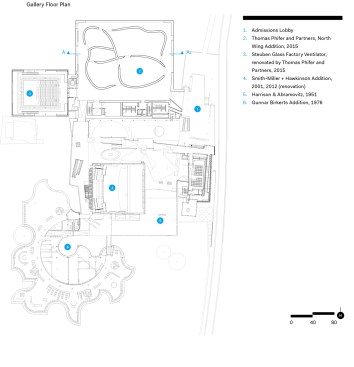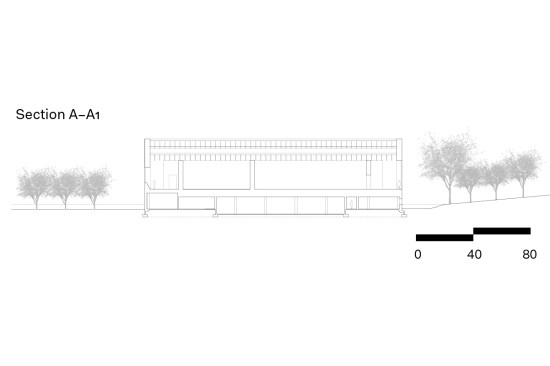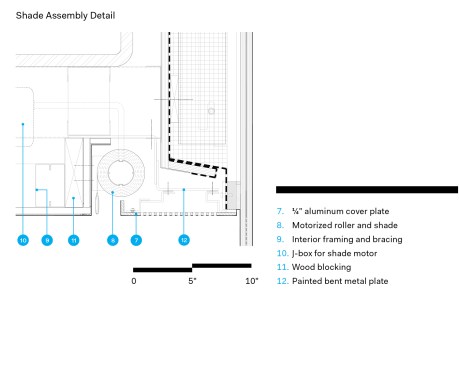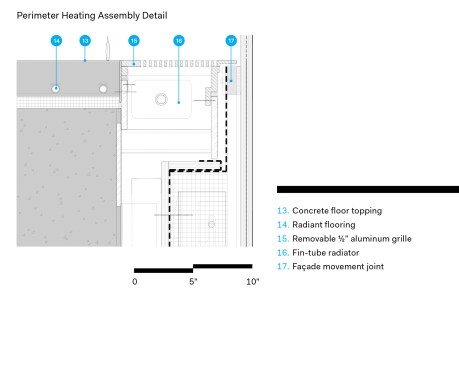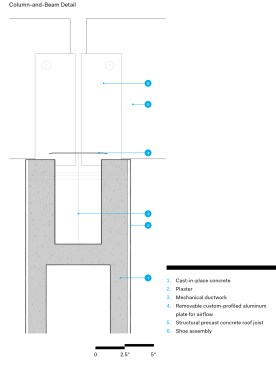Project Description
This article appeared in the June 2020 issue of ARCHITECT.
As client-designer pairings go, the Corning Museum of Glass and Thomas Phifer and Partners are remarkably well-suited—the institution, which is devoted to preserving and displaying delicate works, is a perfect match for the architect’s sensitive, artful approach. The fruits of their collaboration are showcased in the museum’s newest wing in Corning, N.Y., which boasts an interior sturdy enough to accommodate a half-million visitors per year, yet as refined and elegant as the Lalique glassware on display.
The architects began by leaving behind the boxy contours of the building’s square-planned envelope—which fills out a museum complex with wings by Gunnar Birkerts and Smith-Miller + Hawkinson Architects—opting instead for gently curving white interior walls that seem at times to disappear. The sensation of unbounded space is accentuated by a lighting solution that puts the focus on the work: Raked ceiling beams, acting as louvered shades, direct filtered natural light onto free-standing display cases in the middle of the galleries. The sunbeams strike the colorful objects within, enhancing their vibrancy in such a way that they seem to float against the room’s white backdrop.
As airy and evocative as the exhibition spaces can be, Phifer’s scheme also includes pragmatic accommodations like new offices for museum employees, auxiliary rooms for public meetings, and a renovation of the museum’s existing glass-blowing demonstration space, with a lofted viewing theater where museumgoers can watch professional glazers at work. Translucent glazing allows visitors to gaze out at the surrounding museum campus and to the longtime headquarters of Corning Inc., which is still making the clear stuff after more than a century and a half.
The vase spent years holding flowers in the reception area of Thomas Phifer and Partners’ New York office before it had its moment in the sun. “We’ve had it for as long as I can remember,” recalls director Thomas Phifer, FAIA. “It’s the bigger one by Alvar Aalto, with the subtle curves. We were trying to learn about glass, so we took it downstairs onto the sidewalk, right onto Varick Street.”
The sidewalk experiment was prompted by the commission to add a 100,000-square-foot, $64 million wing for contemporary art and design to the Corning Museum of Glass in Corning, N.Y., a company town where the eponymous glassmaker has been headquartered since 1868. The addition features a 26,000-square-foot, single-level gallery over lower-level offices and adjoins an industrial shed from the former Steuben Glass Factory that has been converted to a 500-seat glassblowing demonstration theater. The administrative campus is already a timeline of the architectural applications of glass, as is the museum building: the 1951 glass-block and curtainwall International Style original by Harrison & Abramovitz; Gunnar Birkerts’ 1976–1980 addition, all mirrored angles and tinted curves; and Smith-Miller + Hawkinson’s 2001 galleries and admissions lobby, a study in cable-stayed structures and fractured-seeming geometries.
Down on Varick Street, Phifer was especially interested in sunlight. “It was really bright that day,” he remembers, and once they took that vase outside, “this thing that we hadn’t ever totally paid attention to just came to life.”
Although Phifer’s work, with its zest for components and arrays and alloys and polymers, visibly falls within a high-tech tradition, it resists the mannered hyperformalism into which many of the genre’s founders have now lapsed. The result at Corning is an intricate simplicity and an expansive restraint, serving neither a Puritan abstemiousness nor a polemical economy, but supporting a maximal sensory experience of literally visual and figuratively physical lightness. One in which the curated artifacts and landscapes provide the essential spectacles and illuminations. It’s a vase that makes you see the flowers.
Cost: $64 million
This project won a 2020 AIA Interior Architecture Award.
FROM THE AIA:
Welcoming nearly 500,000 visitors annually, the Corning Museum of Glass is one of New York’s most popular museums. The museum surveys nearly 35 centuries of glass, from ancient to contemporary works, and since opening in 1951 has seen five major expansions. Each has included innovative glass architecture, and this new 100,000-square-foot Art + Design Wing is no exception.
The new wing adds 26,000 square feet of exhibition space and is the museum’s largest space dedicated to the display of contemporary glass art. In addition, it provides new offices for museum staff, a community room for community and school programming, a retail shop, and a renovated hot glass workshop for live demonstrations.
Its crystal white façade contrasts with Corning Incorporated’s original dark office building. A layer of laminated glass that seamlessly transitions from rain screen to translucent window provides views onto a campus green. At 150 feet long, the viewing area aligns precisely with the floor and ceiling. Within the rectangular building, curved concrete walls eschew museum norms of straight walls required for paintings and works on paper.
The project’s architectural heart is found in the fully daylit gallery, which showcases the museum’s large collection of contemporary works. The ambient lighting is completely natural, entering the space through insulated skylights above and fritted windows along its perimeter. When needed, high-efficiency LED and fluorescent lighting strictly controlled through external daylight sensors provide complementary lighting. In the museum’s generally overcast environment, this light-filled space is uplifting for both visitors and museum staff while illuminating and honoring the works of art.
Though the museum was already a popular cultural destination, the new wing has prompted an increase in visitors and summer program participants. By changing the gallery viewing experience, it has also injected the campus with a new sense of vitality.
Project Credits:
Project: Corning Museum of Glass
Architects: Thomas Phifer and Partners
Structural Engineer: Guy Nordenson and Associates
M/E/P and Fire Protection Engineer: Altieri Sebor Wieber
Landscape Architect – Reed Hilderbrand
Facade Consultant – Heintges
Daylighting and Lighting Design – Arup
Climate Engineer – Transsolar
Civil Engineer and LEED Consultant – O’Brien & Gere
Waterproofing Consultant – Simpson Gumpertz & Heger
Environmental Graphics – 2×4
Cost Consultant – Stuart-Lynn Company
Spec Writer – Construction Specifications
Acoustics and Audio Video Design – Jaffe Holden
Theater Design – Theatre Projects
Construction Management – Gilbane+Welliver Joint Venture
